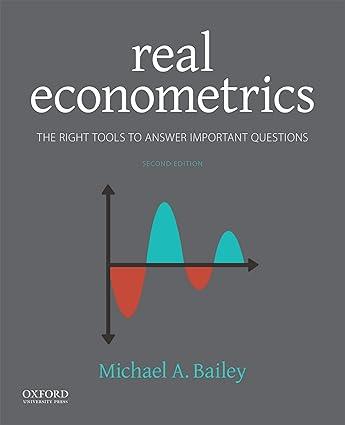Use the MLBattend.dta data on Major League Baseball attendance records for 32 teams from the 1970 s
Question:
Use the MLBattend.dta data on Major League Baseball attendance records for 32 teams from the 1970 s through 2000 . We are interested in the factors that impact baseball game attendance.
(a) Estimate a regression in which home attendance rate is the dependent variable and wins, runs scored, and runs allowed are the independent variables. Report your results, identify coefficients that are statistically significant, and interpret all significant coefficients.
(b) Suppose someone argues that we need to take into account the growth of the U.S. population between 1970 and 2000. This particular data set does not have a population variable, but it does have a variable called Season, which indicates what season the data is from (e.g., Season equals 1969 for observations from 1969 and Season equals 1981 for observations from 1981, etc.). What are the conditions that need to be true for omission of the season variable to bias other coefficients? Do you think they hold in this case?
(c) Estimate a second regression by using the dependent and independent variables from part (a), but including Season as an additional independent variable to control for trends on overall attendance over time. Report your results, and discuss the differences between these results and those observed in part (a).
(d) What is the relationship between Season and Runs_scored? Assess with an auxiliary regression and a scatterplot. Discuss the implications for the results in part (c).
(e) Which matters more for attendance: winning or runs scored? [To keep us on the same page, use home attend as the dependent variable and control for wins, runs_scored, runs_allowed, and season.]
Step by Step Answer:

Real Econometrics The Right Tools To Answer Important Questions
ISBN: 9780190857462
2nd Edition
Authors: Michael Bailey





